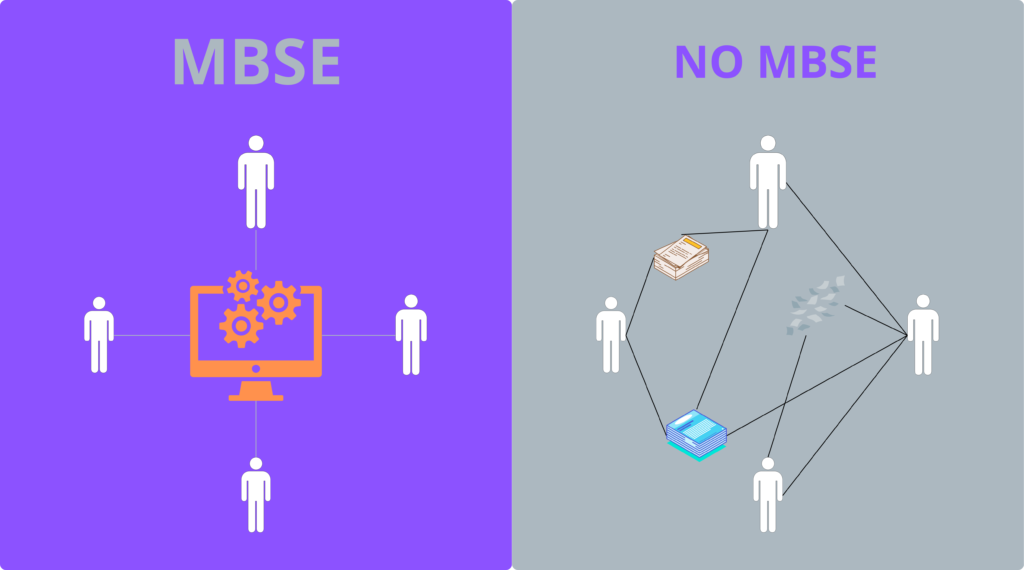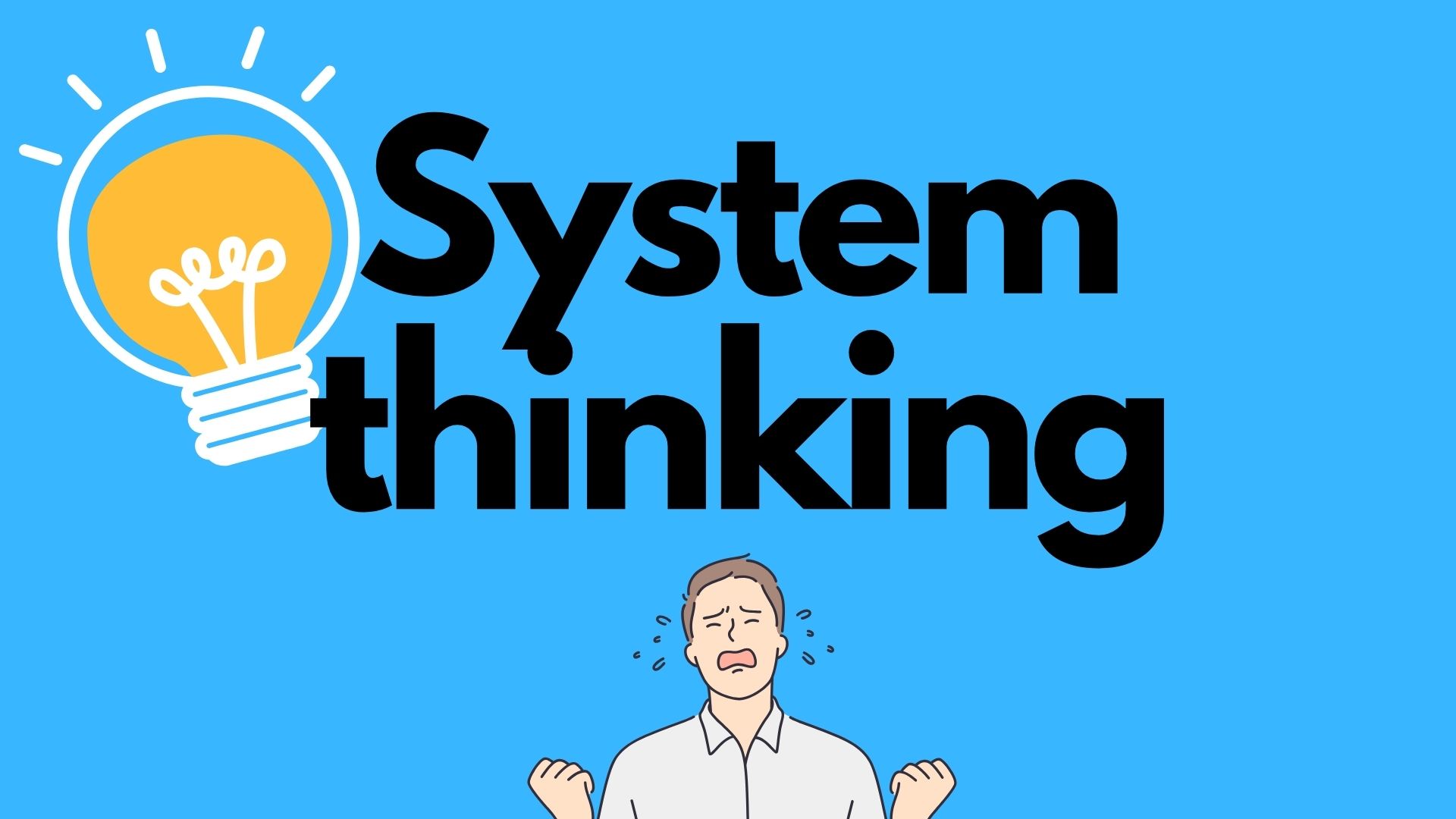

Table of Contents
In the evolving landscape of systems engineering, Model-Based Systems Engineering (MBSE) has emerged as a pivotal methodology, transforming traditional approaches to design, analysis, and validation.
This article delves into the essence of MBSE, tracing its history, exploring its synergy with SysML, and highlighting its indispensable role in systems engineering processes.
We will also examine the benefits of MBSE, its modeling techniques and principles, methodologies, leading tools, and provide insights into why Arcadia/Capella might be preferred over SysML.
Definition of MBSE
Model-Based Systems Engineering (MBSE) is a formalized methodology used in systems engineering that focuses on creating and exploiting domain models as the primary means of information exchange, rather than relying on traditional document-based approaches.
MBSE aims to enhance the clarity, consistency, and comprehensibility of systems engineering efforts by using models to support decision-making throughout the lifecycle of a project.
History of MBSE
The concept of MBSE has been around since the late 20th century, evolving from the need to address the limitations of document-based systems engineering. As systems grew in complexity, the inefficiencies and error-prone nature of traditional methods became increasingly apparent.
The International Council on Systems Engineering (INCOSE) played a pivotal role in formalizing MBSE, promoting its adoption across various industries since the early 2000s.
MBSE and SysML
The Systems Modeling Language (SysML) is often associated with MBSE as it provides a standardized language tailored for systems engineering.
SysML offers a comprehensive modeling language that supports the specification, analysis, design, verification, and validation of complex systems. It encompasses a wide range of diagrams and modeling techniques that align with the MBSE approach, facilitating a systematic and coherent representation of systems.
The Role of MBSE in Systems Engineering Processes
MBSE influences every phase of the systems engineering lifecycle, from conceptual design to validation:
- Requirements Analysis: Models help in the precise articulation and validation of requirements.
- Design: Offers a platform for exploring alternative designs and assessing their feasibility.
- Implementation: Guides the development process with clear, model-derived specifications.
- Verification and Validation: Enables rigorous testing scenarios derived from models, ensuring alignment with requirements.
Advantages of MBSE

The adoption of MBSE offers numerous benefits, including:
- Enhanced Communication: Models provide a clear and unambiguous medium for communication among stakeholders.
- Improved Quality: Facilitates early detection of issues, reducing errors and rework.
- Efficiency: Streamlines the design process, reducing time and cost.
- Better Decision Making: Supports analysis and simulation, enabling informed decisions.
MBSE Modeling Techniques and Principles

MBSE relies on various modeling techniques and principles to represent complex systems effectively. These include:
- Structural Modeling: Capturing the components and architecture of systems.
- Behavioral Modeling: Describing how systems operate and respond to inputs.
- Parametric Modeling: Defining relationships between system elements to support analysis and optimization.
- Viewpoint Modeling: Tailoring representations to meet the needs of different stakeholders.
MBSE Methodologies
Model-Based Systems Engineering (MBSE) methodologies serve as the backbone for implementing systems engineering processes.
These methodologies guide the development, deployment, and maintenance of complex systems through structured models, offering a systematic approach to address challenges associated with traditional document-based methodologies.
Among the plethora of MBSE methodologies, Harmony, MagicGrid, and Arcadia stand out, each bringing unique perspectives and practices to the systems engineering community.
Harmony SE
Harmony Systems Engineering (Harmony SE) is an MBSE methodology that emphasizes a seamless integration between systems engineering and software development processes. It is designed to optimize the development lifecycle by ensuring that system requirements are accurately captured, modeled, and traced throughout the project lifecycle.
- Key Features:
- Focuses on early validation of requirements and design through rigorous use of models.
- Incorporates best practices from both systems engineering and software development.
- Utilizes SysML for modeling to ensure consistency and clarity in communication.
- Benefits:
- Reduces the risk of requirement misinterpretations and design flaws.
- Enhances collaboration between multidisciplinary teams.
- Streamlines the transition from system design to implementation.
MagicGrid
MagicGrid, developed by the No Magic company (now part of Dassault Systèmes), is a comprehensive MBSE methodology that provides a structured framework for systems modeling. MagicGrid leverages the SysML language to facilitate the organization, analysis, and documentation of complex systems.
- Key Features:
- Offers a systematic approach to capturing, analyzing, and validating system requirements and designs.
- Structures models into four primary viewpoints: Requirements, Functional, Static, and Dynamic, ensuring a holistic representation of systems.
- Supports model-based management of project complexity and stakeholder communication.
- Benefits:
- Ensures thorough coverage of all system aspects from conception through to deployment.
- Facilitates the identification and mitigation of potential issues early in the development process.
- Promotes a deeper understanding of system behavior and architecture among stakeholders.
Arcadia
Arcadia is a model-based engineering method focused on architecture analysis and design, particularly tailored for complex systems. It is supported by the open-source tool Capella and emphasizes capturing and analyzing system architectures to guide decision-making.
- Key Features:
- Concentrates on the analysis of operational needs, system functional architecture, and logical and physical architecture.
- Encourages iterative exploration of architectural and design choices.
- Utilizes a purpose-built modeling language, closely aligned with the Arcadia methodological approach.
- Benefits:
- Facilitates the early identification of optimal architectural and design solutions.
- Enhances the alignment between system requirements and stakeholders’ needs.
- Supports effective decision-making through clear, comprehensive system models.
Top MBSE Modeling Tools
A variety of tools support MBSE, each offering unique features:
- MagicDraw/Cameo Systems Modeler:
- Advantages: Comprehensive SysML support, robust simulation capabilities.
- Disadvantages: Steep learning curve, high cost.
- IBM Rational Rhapsody:
- Advantages: Strong integration with other IBM software, good for complex systems.
- Disadvantages: Can be cumbersome for small projects.
- Enterprise Architect:
- Advantages: Versatile, supports a wide range of standards.
- Disadvantages: Interface can be overwhelming for new users.
Why Use Arcadia/Capella Instead of SysML?
Arcadia/Capella offers a methodology and tooling that focus on architectural analysis and design, tailored specifically for systems, hardware, and software co-engineering.
Unlike SysML, which is a general-purpose modeling language, Arcadia/Capella provides a more guided approach with methodologies that help in identifying and validating architectural choices early in the design phase.
This specificity can lead to more efficient modeling and analysis for certain types of projects.
Conclusion
Model-Based Systems Engineering represents a paradigm shift in how systems are designed, developed, and maintained. By leveraging the power of models, MBSE facilitates a more systematic, efficient, and effective approach to systems engineering.
Before we dive into the exciting world of system engineering, let’s lay down some groundwork by understanding what a system really is. What is a System? 🤔 INCOSE ( international council of system engineering ) define the system as follow : “A system is an integrated set of elements, subsystems, or assemblies that accomplish a […]
Understand INCOSE and ISO15288 In the realm of systems engineering, two significant entities have made substantial contributions to standardizing practices and methodologies: The International Council on Systems Engineering (INCOSE) and the ISO/IEC/IEEE 15288 standard. Both play pivotal roles in guiding professionals on how to effectively manage and execute systems engineering processes. This article delves into […]
In our intricately connected world, tackling problems in isolation is no longer effective. Systems thinking emerges as a beacon of hope, offering a lens to view problems and solutions in their entirety. This article embarks on a journey to uncover the essence of systems thinking in problem-solving, highlighting its importance in today’s complex world and […]




